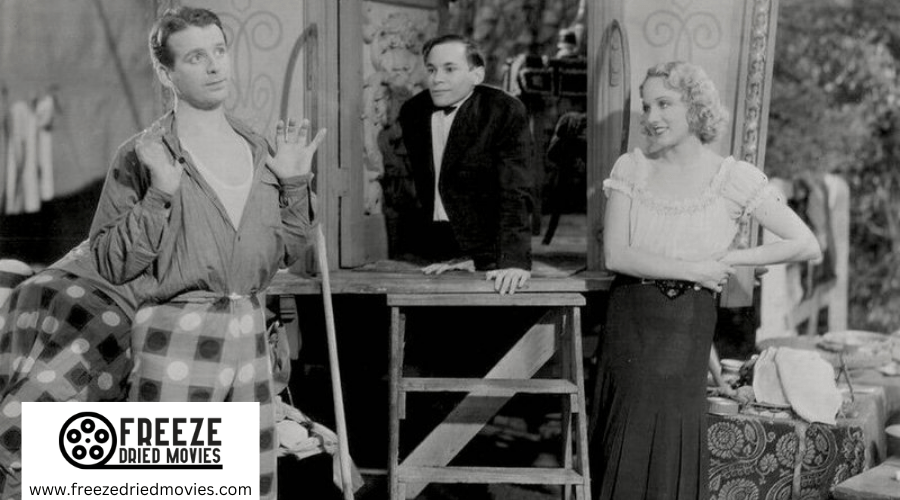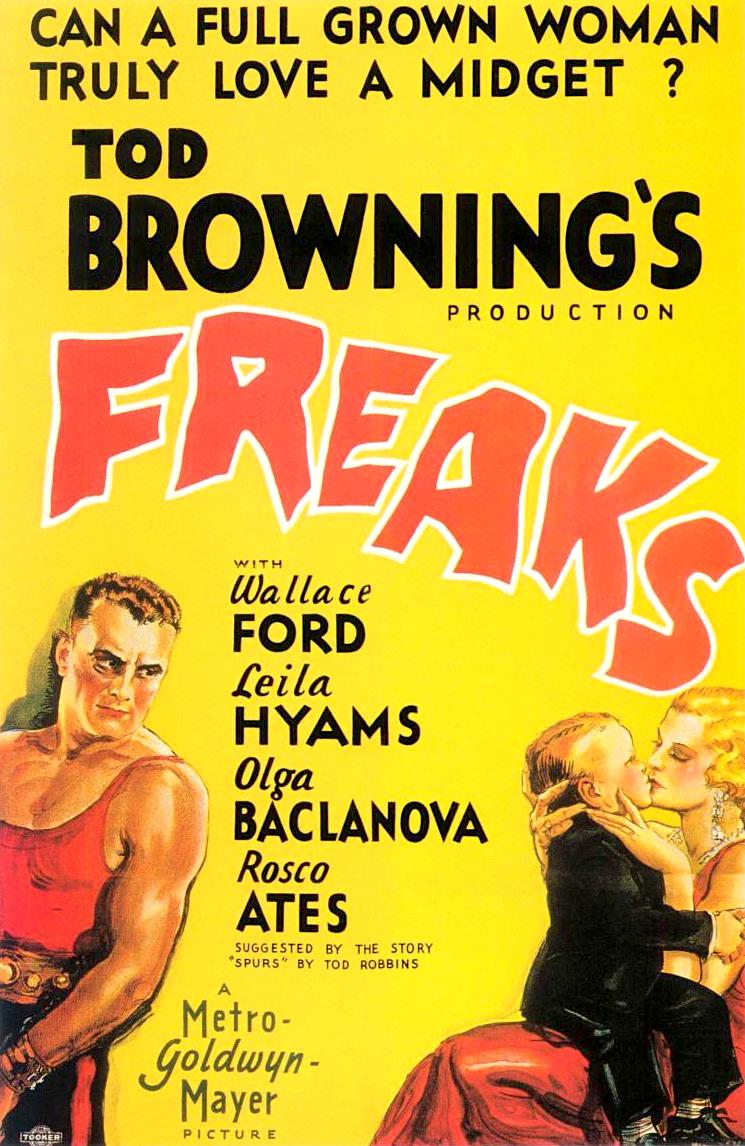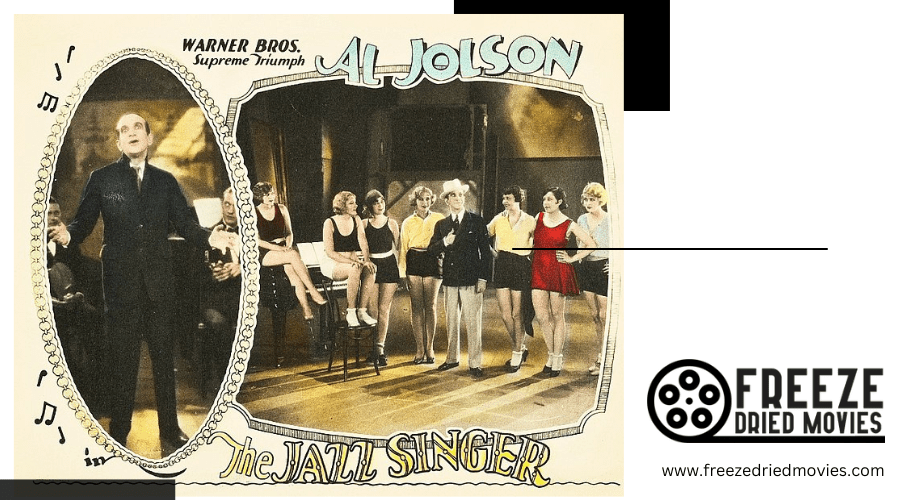Freaks 1932: Groundbreaking Horror Film Still Shocks Audiences Today

"Freaks" is a groundbreaking horror film from 1932 that left a lasting impact on cinema. It stands out for its use of real sideshow performers with disabilities as cast members. The movie tells a story of betrayal and revenge within a circus community.
The film's release sparked strong reactions from audiences and critics. Many found it too disturbing, leading to bans in some countries. Despite its initial poor reception, "Freaks" has since gained recognition as an important work of art. It is now seen as a cult classic that challenges societal norms and promotes acceptance of those who are different.
The Director's Journey
Tod Browning's path to directing "Freaks" began in his youth. At 16, he left home to join a carnival. This experience shaped his future filmmaking career. In the late 1800s, carnivals were popular attractions. People flocked to see unusual performers and oddities.
Browning wore many hats in the carnival world. He worked as a barker, drawing crowds to exhibits. He also tried his hand at various circus acts. These included:
- Escapology
- Clowning
- Stunt riding
- Contortion
- Magic
- Tap dancing
As carnivals thrived, a new form of entertainment emerged: cinema. Movie machines appeared alongside carnival acts, hinting at the future of visual spectacle.
Browning's film career started in 1913. He acted in a D.W. Griffith comedy. Soon after, he moved to Hollywood and began directing. But his early career faced challenges due to alcohol problems. A serious car crash in 1915 nearly ended his life.
His big break came with "The Unholy Three" in 1925. This crime film featured sideshow performers as main characters. It was a hit for MGM studios. The movie starred Lon Chaney Sr. and introduced Harry Earles, a small-statured actor.
Browning and Chaney Sr. worked together on several films:

- "The Road to Mandalay" (1927)
- "The Unknown" (1927)
- "London After Midnight" (1927)
These dark films were very successful. Browning claimed he earned a huge salary, though this might be an stretch.
His success led him to direct "Dracula" for Universal Studios. But the shift to talking pictures was hard for Browning. He struggled to adapt his directing style. Chaney Sr., set to play Dracula, died before filming began.
Browning's drinking increased during "Dracula's" production. Some say the cinematographer took over much of the directing. Despite these issues, "Dracula" was a box office hit.
This success allowed Browning to return to MGM. There, he focused on his next project: "Freaks." His carnival background and taste for the unusual made him a natural fit for this unique film.
Browning's journey from carnival worker to Hollywood director was not smooth. But his experiences gave him a special insight into the world of "Freaks." His familiarity with sideshow life and outsider characters shaped the film's unusual and sympathetic portrayal of its cast.
The Roots of "Freaks"

Tod Browning's film "Freaks" can trace its beginnings to a short story called "Spurs" by author Clarence Robbins. The tale revolved around a circus love triangle, featuring a small-statured performer, a regular-sized circus girl, and her lover.
Robbins' original story took a darker tone than the eventual movie script. It centered on a greedy bareback rider named Jeanne Marie who agreed to marry a wealthy little person. She believed he would die young, despite her true feelings for another performer of average height.
The story took a grim turn at the wedding feast. Jeanne Marie playfully carried the groom on her shoulders, boasting she could take him across France. This led to a harsh punishment reminiscent of old fairy tales. The groom forced Jeanne to carry him along French country roads, using spurs to drive her forward. By the end, Jeanne was so changed that her true love couldn't recognize her.
"Spurs" first appeared in print in 1923. MGM bought the rights for $8000, likely with Browning in mind to direct. The studio hoped to compete with Universal's successful horror films. They saw potential in this backstage circus story.
Browning reportedly promised studio executive Irving Thalberg he would deliver the ultimate horror picture. The final product, however, was not what Thalberg had expected.
The Film
"Freaks" hit theaters in 1932, bringing a unique blend of horror and drama to the silver screen. The story unfolds in a circus, focusing on a group of sideshow performers with various physical differences.
The plot centers on Hans, a dwarf who falls for Cleopatra, a beautiful trapeze artist. Cleopatra pretends to love Hans back, but she's really after his inheritance. She teams up with Hercules, the strongman, to plot against Hans.
The movie introduces a cast of characters with unusual physical traits:
- Daisy and Violet Hilton: conjoined twins
- Johnny Eck: a man born without legs
- Prince Randian: known for having no limbs
- Koo Koo: a woman with a bird-like appearance
- Schlitzie: a performer with microcephaly
These performers were real people with actual conditions, not actors in makeup. This added a layer of authenticity to the film.
The story takes a dark turn at Hans and Cleopatra's wedding feast. The other performers try to welcome Cleopatra into their group. But she rejects them harshly, calling them "dirty, slimy freaks." This moment marks a shift in the film's tone.
After this insult, the sideshow performers band together. They discover Cleopatra is trying to poison Hans. In response, they plan their revenge.
The film's climax occurs during a stormy night. The "freaks" chase down Cleopatra and Hercules. While the specifics of their actions aren't shown, the results are clear in the film's final scenes.
"Freaks" stands out for its portrayal of its characters. It doesn't paint them as monsters. Instead, it shows their humanity and community. The true villains are those who mistreat them.
The movie faced many challenges:
| Challenge | Result |
|---|---|
| Audience reaction | Many viewers found it disturbing |
| Censorship | Banned in several countries |
| Box office | Failed to make money |
Despite these setbacks, "Freaks" has gained recognition over time. It's now seen as an important piece of cinema history.
The film raises questions about what's normal and what's monstrous. It suggests that true monstrosity comes from cruel actions, not physical appearance.
"Freaks" was directed by Tod Browning, who had previously worked on circus-themed films. His background in this world likely influenced the movie's authentic feel.
The film's tagline hints at its themes: "Can a full-grown woman truly love a midget?" This question sets up the central conflict and touches on taboo subjects for the time.
Some key scenes in the film:
- The picnic: Shows the performers in a peaceful setting
- Venus leaving Hercules: Introduces the "normal" characters
- The wedding feast: Marks the turning point in the story
- The storm chase: Builds tension for the climax
"Freaks" was made before the strict enforcement of the Hays Code. This allowed it to touch on subjects that would soon be off-limits in Hollywood.
The movie's ending leaves a lasting impression. It reveals Cleopatra's fate without showing the act of revenge itself. This approach lets viewers' imaginations fill in the gaps, often creating a more frightening effect than explicit scenes.
"Freaks" has influenced many filmmakers over the years. Its impact can be seen in later horror and drama films that explore themes of outsiders and society.
The film's treatment of its characters was ahead of its time. It showed them as complex individuals with their own wants and needs. This was rare for a 1930s movie dealing with people often treated as oddities.
"Freaks" remains a topic of discussion among film buffs and scholars. Its unique approach to its subject matter continues to spark debate about representation in media.
The Film's Lasting Impact
"Freaks" faced a rocky start when it premiered in 1932. Viewers were shocked by its content, leading to its quick removal from theaters. The movie's director, Tod Browning, saw his career decline after its release.
The film remained hidden for decades until its reemergence at the 1962 Cannes Film Festival. A new generation embraced it, and "Freaks" found a home in arthouse cinemas. Its unique story and characters left a deep mark on viewers.
The movie's impact spread far beyond the screen. It inspired TV shows, music videos, and books. HBO's "Carnivale" and U2's "All I Want Is You" video both drew from "Freaks." The film's themes appear in works like James Herbert's book "Others" and an episode of "The X-Files."
"Freaks" stands out not for its filmmaking style, but for its subject matter. It puts real people with disabilities on screen, which was rare then and remains uncommon now. This choice still makes some viewers uneasy.
The film flips viewers' ideas of normal and abnormal. It shows the carnival world as an everyday place where people live regular lives. At the same time, it turns the "normal" characters into the true monsters of the story.
"Freaks" continues to spark discussions about difference and acceptance. It asks viewers to see past physical appearances and think about what makes someone human. This message has kept the film relevant for nearly a century.
Despite early rejection, "Freaks" has become an important part of film history. It's now seen as a groundbreaking work that challenges how we view others. The Library of Congress added it to the National Film Registry in 1994, marking its place as a key piece of American cinema.
The film's legacy extends to modern horror and drama. Many current filmmakers cite "Freaks" as an inspiration for their work. Its honest portrayal of its characters and its bold storytelling continue to influence new generations of artists.
"Freaks" raises questions about empathy and community. It shows how a group of outsiders form strong bonds and protect each other. This theme of found family resonates with many viewers today.
The movie's journey from banned film to respected classic shows how attitudes can change over time. What once shocked audiences is now studied in film schools and praised by critics. "Freaks" proves that art can change minds and open hearts, even years after its creation.




